December 2023
Kabuki is thought to have originated in the early Edo period, when the art’s founder, Izumo no Okuni, formed a female dance troupe that performed dances and light sketches in Kyoto. The art form later developed into its present all-male theatrical form after women were banned from performing in kabuki theatre in 1629. Kabuki developed throughout the late 17th century and reached its zenith in the mid-18th century.
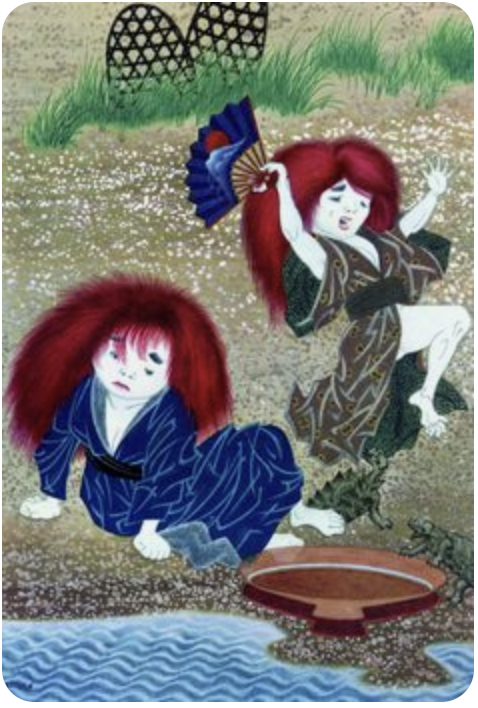
You can buy one-act tickets for the Kabukiza Theater in Tokyo. It was fascinating. I saw Shojo, the Mythical Sake Loving Spirit. The shôjô is a mythical sake-loving spirit that lives in the sea. In this dance, a sake seller has a mysterious customer who appears daily and drinks enormous amounts with great satisfaction. The sake seller has a dream with instructions to go by the beach with a large tub of sake. As it turns out, the customer has actually been the shôjô in disguise. The dance shows two shôjô as they drink and dance. – No photos are allowed.
Sumo
I love Sumo, but the season does not start until January 14th. So, I had to make do with watching a practice through a window. I was too late to get tickets to sit inside up close and personal. Despite the glare of the window and an amazingly rude woman with a selfie stick, I got some fun shots.
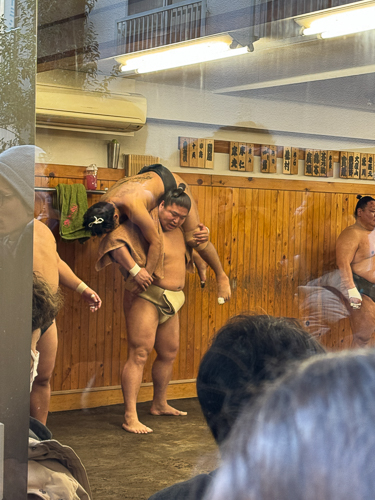
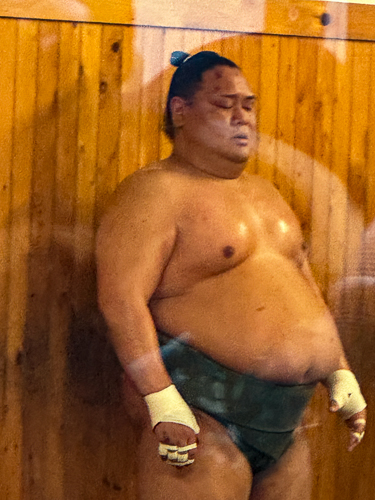
If you aren’t familiar, Sumo is a Japanese style of wrestling and Japan’s national sport. It originated in ancient times as a performance to entertain the Shinto deities. The sport contains many rituals with religious backgrounds, such as the symbolic purification of the ring with salt. And speaking of tradition, only men practice the sport professionally in Japan.
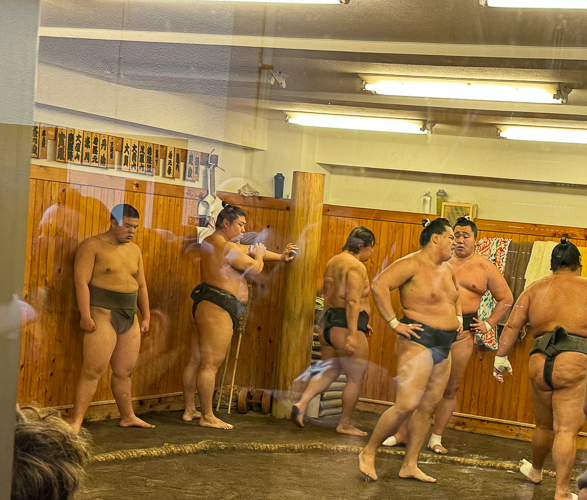 The rules are simple: the wrestler who first exits the ring or touches the ground with any part of his body besides the soles of his feet loses.
The rules are simple: the wrestler who first exits the ring or touches the ground with any part of his body besides the soles of his feet loses. 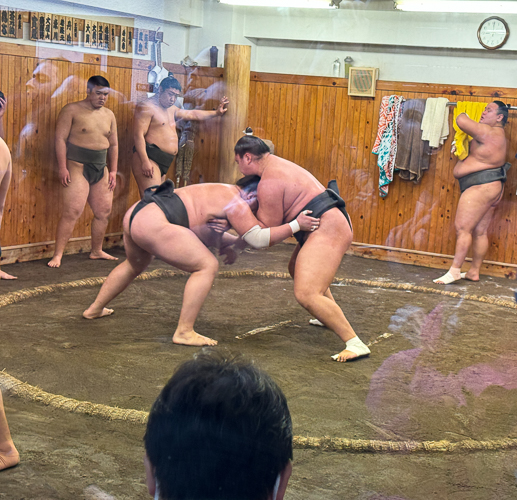
Matches take place on an elevated ring (dohyo), which is made of clay and covered in a layer of sand.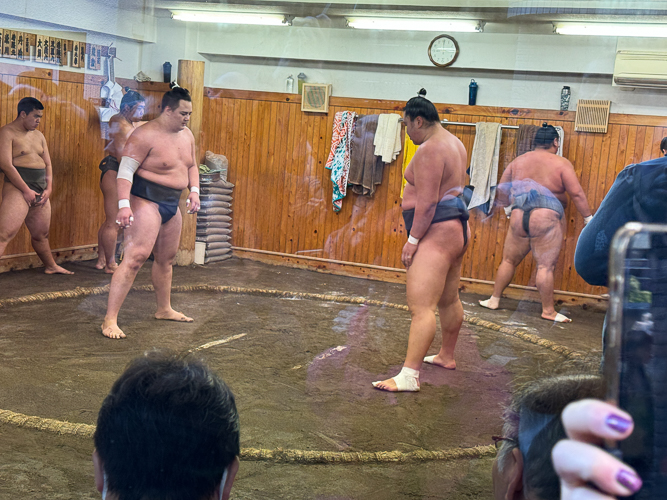 A contest usually lasts only a few seconds but, in rare cases, can take a minute or more.
A contest usually lasts only a few seconds but, in rare cases, can take a minute or more.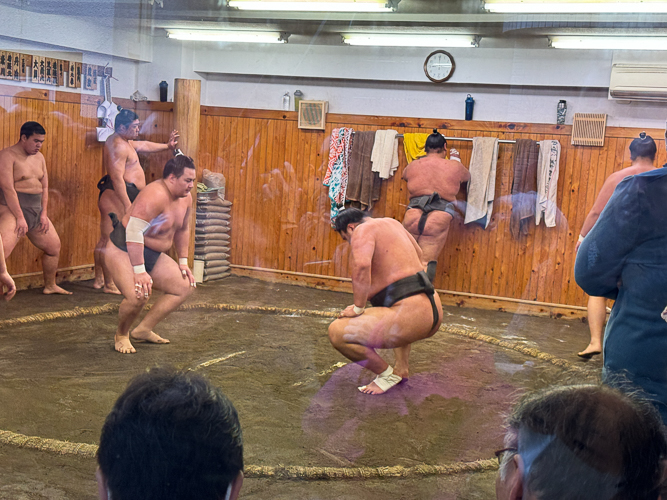 There are no weight restrictions or classes in sumo, meaning that wrestlers can easily find themselves matched off against someone many times their size. As a result, weight gain is an essential part of sumo training.
There are no weight restrictions or classes in sumo, meaning that wrestlers can easily find themselves matched off against someone many times their size. As a result, weight gain is an essential part of sumo training.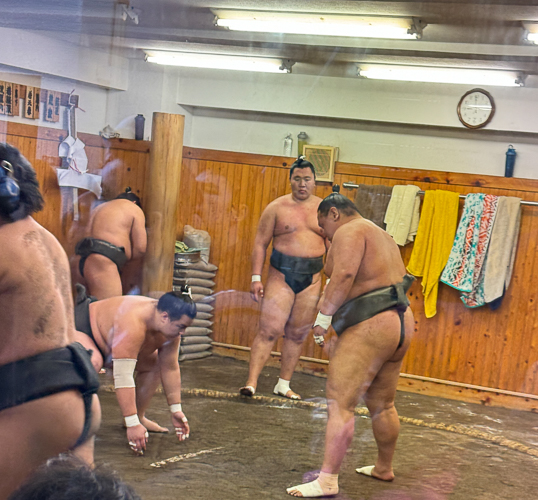
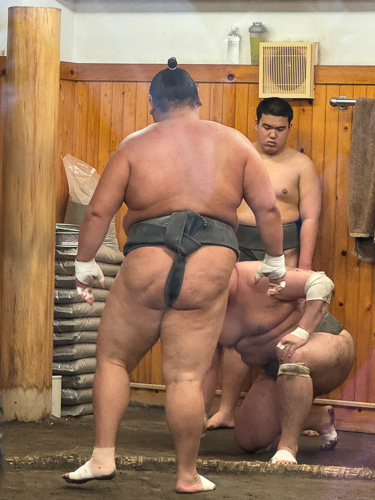
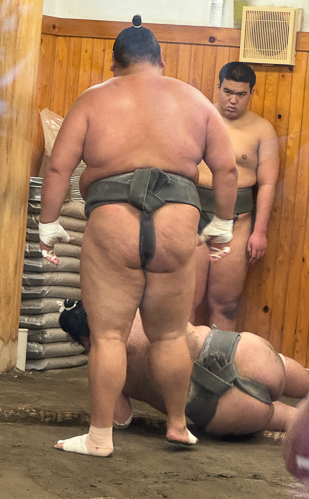
*